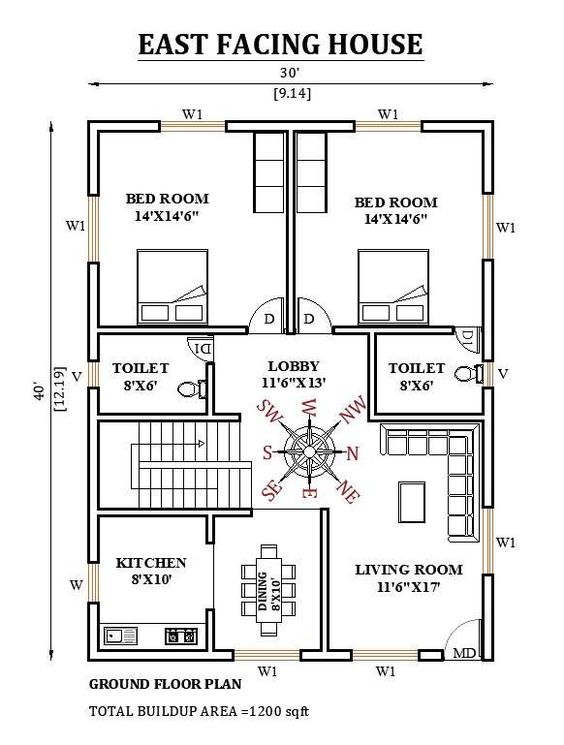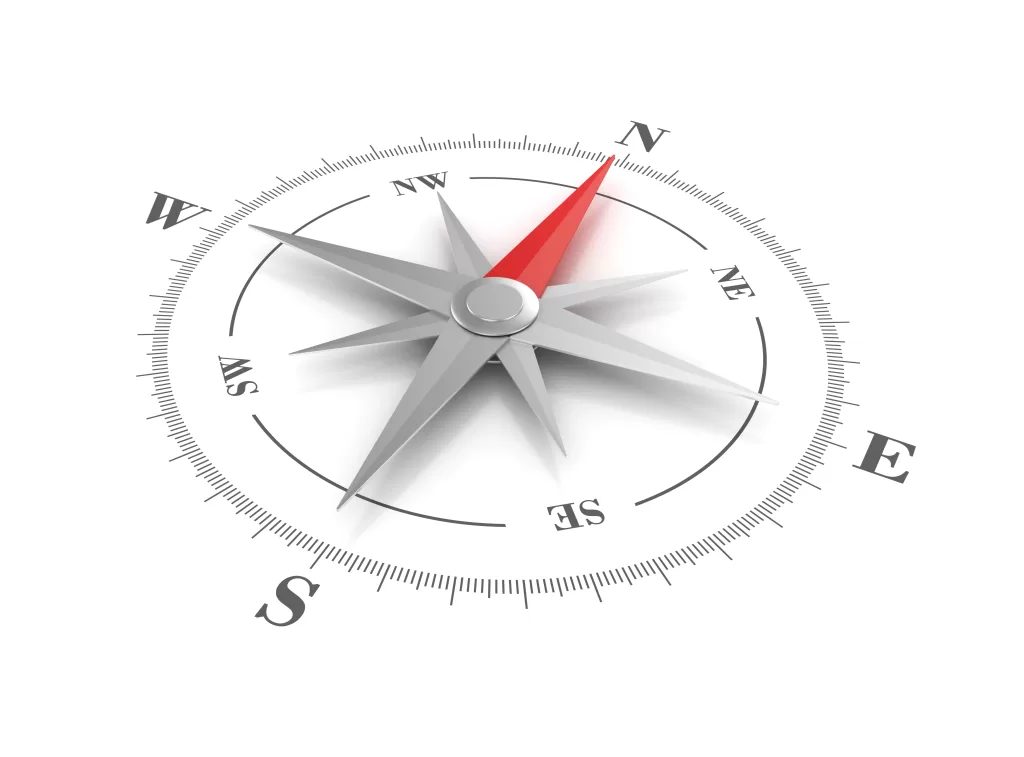Table of Content
When planning to build or renovate a home, following Vastu Shastra, an ancient Indian science of architecture, is highly beneficial. The concept revolves around balancing the five natural elements – earth, water, fire, air, and space – to create a harmonious living environment. One crucial tool in this process is the Vastu chart, which guides the correct orientation of rooms and spaces within a house.
In this detailed guide, we will explore the significance of the Vastu chart in house planning, the directions assigned to different areas, the benefits of following these directions, and essential tips for ensuring a Vastu-compliant home.
What is a Vastu Chart?
A Vastu chart is a floor plan or blueprint based on the principles of Vastu Shastra, ensuring each room in a house is aligned with specific directions. This alignment promotes positive energy and well-being for the inhabitants. The chart divides the house into nine zones, each governed by a particular deity or natural element, influencing different aspects of life like health, wealth, happiness, and relationships.
Key Directions in Vastu Chart
Vastu Shastra is highly dependent on the directions in which different rooms and spaces are placed. Here's a breakdown of the ideal placement for various rooms according to the
Vastu chart for each room

|
Room/Space |
Ideal Direction |
Associated Benefits |
|
Main Entrance |
North, East, North-East |
Brings prosperity and good luck |
|
Living Room |
North, East, North-East |
Enhances social relationships and positivity |
|
Master Bedroom |
South-West |
Improves stability, health, and family harmony |
|
Kitchen |
South-East |
Ensures health and harmony by balancing the fire element |
|
Bathroom |
North-West, South-East |
Maintains hygiene and mental peace |
|
Prayer Room |
North-East |
Elevates spirituality and mental peace |
|
Study Room |
West, North-East |
Improves concentration, creativity, and knowledge |
|
Dining Room |
West, East |
Enhances health and family bonding |
|
Guest Room |
North-West |
Creates welcoming and positive vibes for guests |
|
Staircase |
South, South-West, West |
Ensures smooth flow of energy |
Each direction in a Vastu chart plays a vital role in influencing the flow of energy and determining the success, happiness, and well-being of the house occupants.
Also Read: Vastu for factory: Tips to promote profitability
Benefits of Following a Vastu Chart
The Vastu chart offers multiple advantages for the home, ensuring balance and harmony between nature's elements. Some key benefits include:
- Promotes Health and Well-Being: The correct placement of rooms and spaces ensures a positive flow of energy, which promotes physical and mental health.
- Brings Financial Prosperity: Aligning the home according to the Vastu chart helps attract financial stability, abundance, and growth.
- Enhances Relationships: Proper room placements and directions create harmony among family members, fostering stronger relationships and better understanding.
- Boosts Success and Career Growth: Following the Vastu chart supports career advancements by increasing focus, creativity, and professional opportunities.
- Balances Natural Elements: The Vastu chart ensures that the five essential elements – earth, water, fire, air, and space – are well-balanced, maintaining overall harmony in the environment.
Vastu Chart for Different Rooms in a House
- Main Entrance
- Direction: North, East, North-East
- Significance: The main entrance is the gateway for positive energy. Placing the entrance in these directions welcomes prosperity and good luck.
- Living Room
- Direction: North, East, North-East
- Significance: This area is for social gatherings and should be placed in these directions to enhance positivity, peace, and harmonious relationships.
- Master Bedroom
- Direction: South-West
- Significance: The master bedroom in the South-West enhances stability in life, offering health, wealth, and familial harmony.
- Kitchen
- Direction: South-East
- Significance: The kitchen should be in the South-East to balance the fire element, ensuring good health and digestion.
- Prayer Room
- Direction: North-East
- Significance: The North-East is ideal for the prayer room, as this direction enhances spirituality and peace of mind.
- Bathroom
- Direction: North-West or South-East
- Significance: These directions are considered ideal for bathrooms, promoting hygiene and cleanliness.
- Study Room
- Direction: West, North-East
- Significance: Placing the study room in these directions promotes focus, creativity, and wisdom.
Also Read: Vastu Shastra Remedies for Creating a Peaceful Home Environment
Vastu Tips for Home Improvement
Incorporating Vastu principles into your home can be simple and effective. Here are some essential Vastu chart tips:
- Ensure the Main Door is Larger than Other Doors:
- The main entrance door should be larger than other doors in the house, allowing the easy flow of positive energy.
- Keep Corners Clean and Clutter-Free:
- Clutter disrupts the flow of energy, so keep all corners of your house clean and organized, especially the North-East corner.
- Use Light Colors for Walls:
- Light colors like white, cream, and light blue reflect positive energy, creating a peaceful ambiance in the house.
- Avoid Placing Mirrors in the Bedroom:
- Mirrors in the bedroom, especially facing the bed, can cause sleep disturbances. It’s best to avoid them in this space.
- Position Furniture Appropriately:
- Heavy furniture should be placed in the South or West direction of the house. This promotes stability and balance.
- Use Plants to Enhance Positivity:
- Plants like Tulsi and money plants should be placed in the East or North-East direction to attract prosperity and health.
Vastu Chart for Home Interiors
|
Room |
Ideal Direction |
Impact on Energy Flow |
|
Living Room |
North, East |
Brings positivity and enhances relationships |
|
Bedroom |
South-West |
Stability, health, and wealth |
|
Kitchen |
South-East |
Balances fire element for good health |
|
Bathroom |
North-West |
Promotes cleanliness and hygiene |
|
Dining Room |
West |
Enhances family bonding and improves digestion |
|
Prayer Room |
North-East |
Promotes peace of mind and spiritual growth |
|
Study Room |
West, North-East |
Increases focus, creativity, and concentration |
How to Create a Vastu Chart for Your Home
Creating a Vastu chart involves understanding the correct directions and aligning each room in the house accordingly. Here’s a step-by-step guide:
- Determine the Facing of Your House: The first step is to determine the direction your house is facing using a compass.
- Map the Different Zones: Divide the house into nine zones (North, North-East, East, South-East, South, South-West, West, North-West, and Center).
- Assign Rooms According to Directions: Allocate rooms based on the direction guidelines provided in the Vastu chart. For example, the kitchen should be in the South-East, while the master bedroom should be in the South-West.
- Position Windows and Doors Appropriately: Place doors and windows in the North or East direction to allow natural light and air to enter, bringing in positive energy.
Conclusion
The Vastu chart is an essential tool for ensuring that your home is aligned with the principles of Vastu Shastra. By following these guidelines, you can create a balanced, harmonious living environment that promotes well-being, prosperity, and happiness. With simple adjustments, you can transform your home into a Vastu-compliant space that invites positive energy into every corner.
Also Read: Vastu Tips for Bedroom Furniture: A Comprehensive Guide









_1768201460.webp)



Ans 1. A Vastu chart is a blueprint or floor plan based on the principles of Vastu Shastra, ensuring rooms and spaces are aligned with specific directions to enhance the flow of positive energy.
Ans 2. The North, East, or North-East directions are considered ideal for the main entrance, as they welcome prosperity and good luck.
Ans 3. The South-West direction is ideal for the master bedroom, enhancing stability, health, and financial well-being.
Ans 4. No, the kitchen should ideally be placed in the South-East direction to balance the fire element.
Ans 5. A Vastu chart helps balance natural elements, promoting health, wealth, relationships, career growth, and mental peace.